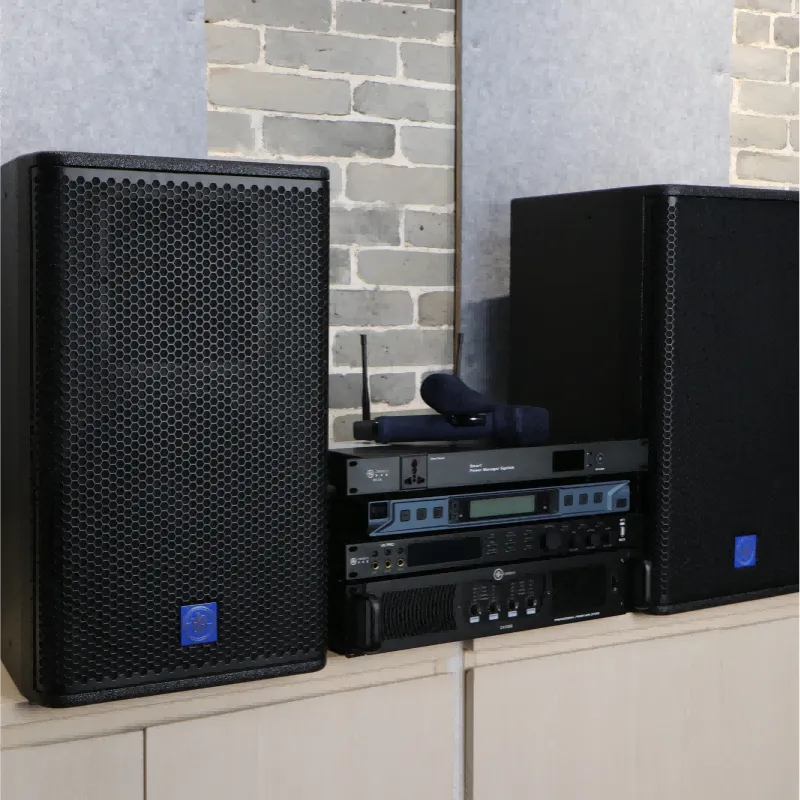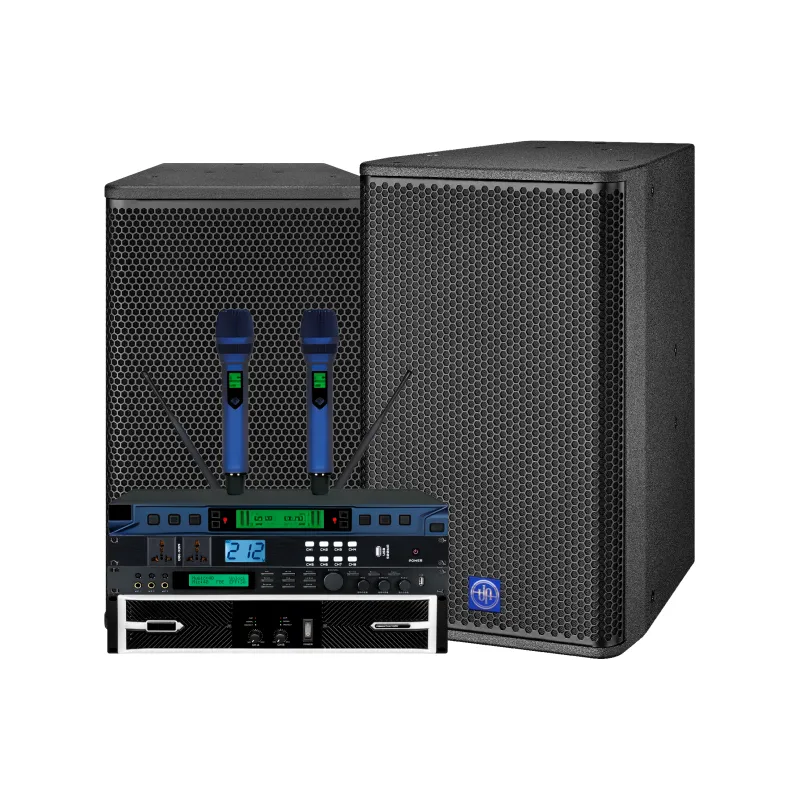Navigating the Complexities of Audio Equipment Shopping
Choosing the right sound system can be a daunting task, especially with the overwhelming variety of options available on the market today. From compact Bluetooth speakers to powerful multi-channel audio setups, each configuration serves a distinct purpose and fits different environments. Without a clear understanding of how features, power output, and usage scenarios align with your specific needs, it's easy to make costly mistakes. A well-informed decision requires considering technical specifications, room acoustics, compatibility, and even aesthetic preferences. With the right approach, you can avoid the majority of common pitfalls in sound system purchasing.
Understanding the Core Components of a Sound System
Speakers and Subwoofers
At the heart of any sound system are the speakers. They convert electrical signals into sound waves, and their quality determines how faithfully audio is reproduced. Subwoofers handle the low-frequency range, adding depth and impact to music and movies. When selecting these components, factors such as frequency response, driver size, and cabinet design play a critical role. For optimal performance, ensure your speakers and subwoofers are compatible with the amplifier’s power output and impedance levels.
Amplifiers and Receivers
Amplifiers serve as the power center of a sound system. They boost audio signals to levels capable of driving speakers effectively. Receivers combine amplification with input switching, radio functionality, and processing for surround sound formats. Matching your amplifier or receiver with your speaker configuration is essential to avoid distortion or underperformance. High-wattage amps may be needed for large rooms, while smaller setups can operate efficiently with lower-powered models.
Matching Power and Room Size for Optimal Performance
Determining the Right Wattage
The wattage rating of a sound system indicates how much power it can handle and output. Higher wattage systems generally produce louder sound, but more isn’t always better. A small room with a 500-watt system can create excessive reverberation and listener fatigue. Conversely, using a low-wattage system in a spacious room may result in weak and unbalanced audio. Consider room size, intended usage, and desired volume levels when evaluating power requirements.
Room Acoustics and Sound Distribution
Every room interacts differently with sound. Materials like glass and concrete reflect sound, while curtains and carpets absorb it. Speaker placement also greatly impacts audio quality. Understanding your room’s acoustics helps determine whether to invest in additional components like acoustic panels or bass traps. Strategic speaker placement and calibration can make a mid-range sound system outperform a poorly configured high-end setup.
Exploring Sound System Types for Different Applications
Home Theater and Entertainment Setups
For immersive movie and gaming experiences, a multi-channel sound system such as a 5.1 or 7.1 configuration is ideal. These systems include a center speaker for dialogue, front left/right for stereo sound, surround channels for ambiance, and a subwoofer for bass. Dolby Atmos-enabled systems add height channels for a more three-dimensional experience. Ensure compatibility between your sound system and your media sources for full functionality.
Portable and Wireless Solutions
Bluetooth and Wi-Fi-enabled sound systems offer flexibility and convenience. These setups are ideal for casual listening in smaller spaces or for users who prioritize mobility. While they may lack the raw power of wired systems, advancements in wireless technology have significantly improved their sound quality and reliability. Look for features like multi-room syncing and app-based controls for added versatility.
Connectivity Options and Compatibility Considerations
Wired vs Wireless Connections
Traditional wired sound systems typically offer better signal stability and sound fidelity. However, they require careful cable management and may limit device mobility. Wireless sound systems use Bluetooth, Wi-Fi, or proprietary RF connections to transmit audio. When choosing a sound system, consider how you plan to connect your audio sources, whether through HDMI ARC, optical input, analog RCA, or wireless protocols.
Integration With Smart Home Ecosystems
Modern sound systems often support smart assistants like Alexa, Google Assistant, or Siri. Integrating these systems into your smart home allows for voice control, automation routines, and integration with other connected devices. Verify system compatibility with your existing smart home infrastructure to avoid functionality issues down the line.

Important Features That Impact User Experience
Frequency Range and Sound Profiles
The frequency range of a sound system describes the spectrum of sound it can reproduce. A wider range translates to more accurate sound reproduction, from deep bass to crisp treble. Many systems offer custom sound profiles or equalizer settings, allowing users to tailor the audio experience to specific preferences or media types.
Build Quality and Aesthetic Appeal
Durability and design are often overlooked but essential aspects of a sound system. A well-built system not only ensures longevity but also complements interior design. Consider materials, finishes, and form factors when evaluating products. A visually appealing system that delivers excellent sound will enhance both auditory and aesthetic experiences.
Avoiding Common Purchasing Mistakes
Ignoring System Compatibility
One of the most frequent errors when buying a sound system is overlooking compatibility between components. Mismatched impedance levels, unsupported file formats, or inadequate amplification can lead to poor sound quality or even equipment damage. Always verify technical specifications and seek expert advice if unsure.
Focusing Solely on Brand Names
While brand reputation can indicate reliability, it should not be the only consideration. Many lesser-known manufacturers offer high-quality sound systems with competitive features at lower price points. Prioritize functionality, build quality, and performance over marketing and brand prestige.
Setting Up and Calibrating Your Sound System
Optimal Speaker Placement Techniques
Even the best sound system can underperform if improperly set up. Speaker height, distance from walls, and listening position alignment all affect audio delivery. Use a sound level meter or built-in calibration software to ensure balanced sound levels across all channels. Subwoofers should be placed near walls or corners for enhanced bass response.
Calibration and Tuning for Balanced Sound
Most modern sound systems come with auto-calibration features using built-in microphones and software. These systems adjust speaker output to compensate for room shape, furniture, and other acoustic factors. Manual tuning using equalizers or sound apps allows further customization for audiophiles seeking the perfect sound balance.
Future-Proofing Your Investment
Expandability and Modular Design
Choose a sound system that can grow with your needs. Modular setups allow you to start with a basic configuration and add components such as additional speakers or subwoofers later. Systems that support firmware updates or open protocols are more adaptable to future technologies.
Energy Efficiency and Sustainability
Energy consumption is a growing concern in electronics. Look for sound systems with energy-saving features like auto shut-off, efficient power supplies, and sustainable materials. Not only does this reduce environmental impact, but it also lowers long-term operating costs.
Frequently Asked Questions
How do I choose the right sound system for my room size?
Start by assessing the dimensions and acoustic properties of your space. Larger rooms typically require higher wattage and more speakers, while smaller rooms benefit from compact, low-powered systems. Tailor your choice based on your typical usage scenarios.
Are wireless sound systems reliable for home use?
Modern wireless sound systems offer stable connectivity and high-quality audio performance. For most home applications, they are sufficiently reliable, especially when using Wi-Fi-based systems with strong network signals.
What is the difference between a receiver and an amplifier?
An amplifier simply boosts audio signals to power speakers. A receiver combines an amplifier with additional features like input selection, radio tuners, and surround sound processing. Receivers are common in home theater setups.
Can I mix and match different brands in one sound system?
While it’s possible, compatibility must be ensured. Check impedance levels, connector types, and supported audio formats. Using components from the same manufacturer often simplifies integration and calibration.
Table of Contents
- Navigating the Complexities of Audio Equipment Shopping
- Understanding the Core Components of a Sound System
- Matching Power and Room Size for Optimal Performance
- Exploring Sound System Types for Different Applications
- Connectivity Options and Compatibility Considerations
- Important Features That Impact User Experience
- Avoiding Common Purchasing Mistakes
- Setting Up and Calibrating Your Sound System
- Future-Proofing Your Investment
- Frequently Asked Questions

